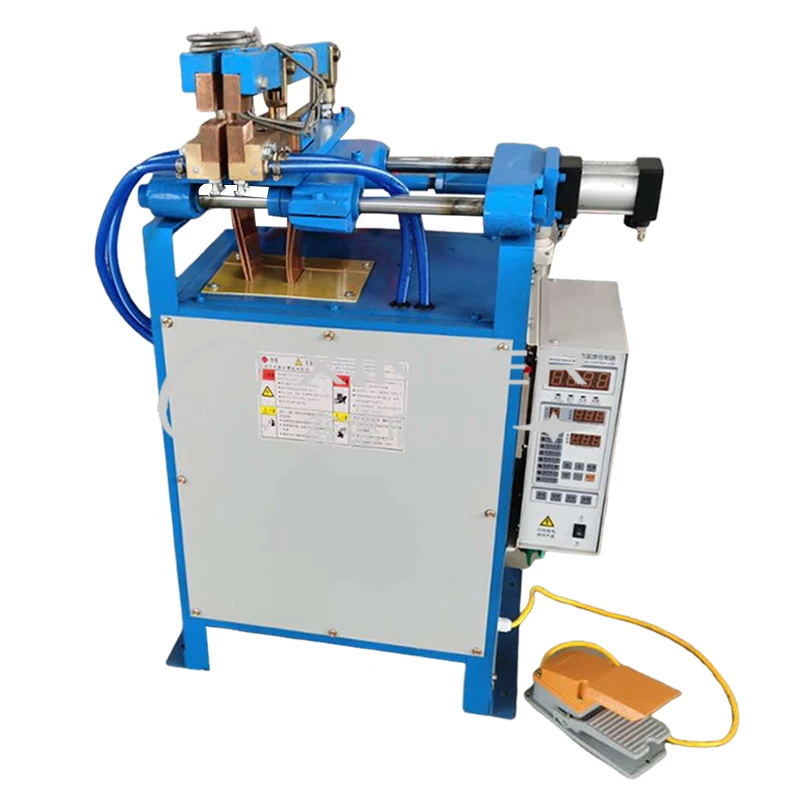Pneumatic Handle Welding Machine
What Is a Spot Welding Machine?
A spot welding machine is a type of resistance welding equipment used to join two or more metal sheets together at specific points without the use of filler material. It works by applying pressure through two copper alloy electrodes while passing a high electric current through the metal. The electrical resistance at the contact point generates localized heat, melting the material and forming a small, strong weld known as a “weld nugget.”
Spot welding machines are widely used in industries such as automotive, aerospace, metal furniture, and home appliances for their speed, efficiency, and ability to produce consistent, clean welds. They are especially effective for thin sheet metals like steel, stainless steel, and aluminum.
The machine typically consists of a power supply, a welding transformer, electrodes, and a control system to adjust welding parameters such as current, pressure, and time. Spot welding is fast, reliable, and well-suited for automation and robotic integration in high-volume production environments.
Spot welding machines offer advantages like low energy consumption, minimal material distortion, and high repeatability, making them essential for modern manufacturing.
Is Spot Welding Stronger Than MIG Welding?
Whether spot welding is stronger than MIG (Metal Inert Gas) welding depends on the application, material thickness, and joint design. In general, MIG welding is stronger for structural or load-bearing applications because it creates a continuous weld bead, resulting in higher tensile strength across a larger area. It’s ideal for thick metals, large assemblies, and situations where weld strength and penetration are critical.
Spot welding, on the other hand, is best for thin sheet metal and produces discrete weld points rather than a continuous seam. While each spot weld can be strong in shear strength, it doesn't cover as much area as a MIG weld. Spot welding is faster, cleaner, and more suitable for high-volume manufacturing, such as automotive body panels and appliances.
In summary, MIG welding generally provides stronger joints, especially on thicker or more structurally demanding parts. However, spot welding offers excellent strength for thin materials and is more efficient for mass production where multiple welds are needed quickly and economically.


